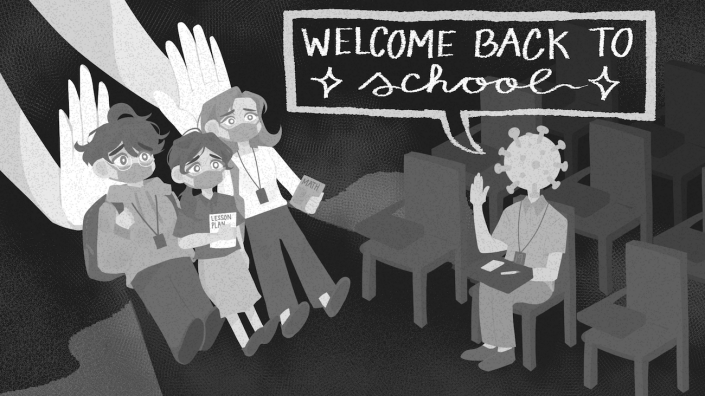
Our public school systems aren’t ready to work in a total face-to-face capacity.
As the Philippines still deals with the COVID-19 pandemic, health should be the utmost concern for the government. However, Vice President and current Education Secretary Sara Duterte has enforced Department of Education (DepEd) Order No. 34 S. 2022, which inadvertently shortens the school break. This puts public school teachers, personnel, and students in a tight position due to the sudden school opening order as they won’t be given enough time to rest or any choice to act on the situation.
While the rationale of the order was to adhere to learning standards and to provide a smooth transition to in-person classes, it also puts the health of teachers and students at risk as they will face logistical and operational lapses.
The official announcement regarding School Year (SY) 2022-2023 has been given on such short notice. Because of this, teachers who just ended SY 2021-2022 last June 24 are already being obliged to begin class preparations for August 22—without even considering the time allotted for enrollment and summer classes.
Even though the teachers made it clear that they would not refuse children of their education, this order neglects the two-month break entitled to them and pushes teachers to sacrifice their welfare.
Despite the earlier adjustment in dates, the announcement still needs clarity as it fails to discuss things such as the overtime pay that should be guaranteed with the exigency of service and shifts beyond their normal working hours. More than anything, this change, coupled with its lack of clarity, demonstrates the government’s ignorant attitude toward and lack of knowledge on how to properly deliver quality education, which greatly affects the welfare of teachers.
Even before the pandemic, teachers have long been sacrificing their wages for their students. They shell money out of their own pockets to give their students adequate materials and worthwhile experiences, which should have already been shouldered by the government or the schools themselves. In the midst of online learning, teachers have gone out of their way to cater to their students. For those in far-flung areas, teachers have made sacrifices to travel to communities to send modules and to personally check up on their students and families—all without additional compensation.
Furthermore, there has been a disparity between the equipment and technology needed by teachers and the tools actually given to them. Similar to what they encountered during the sudden shift to online learning, catering to a brand-new hybrid setup would double the costs. Pilot runs conducted earlier in the year showcased innovative ways to retrofit classrooms to meet health and safety standards, but the burden of maintaining these still lies with the teachers. What will happen when public school administrators will once again rely on the teachers to sustain the delivery of education?
However, getting there is only half the battle. Teachers will soon have to face the added trouble of dealing with students at full capacity, with each educator having to handle an average of 30 students. This means facing a higher risk of contracting COVID-19 and potentially jeopardizing the education of tens, if not thousands, of students should another outbreak occur. It becomes especially difficult given the realities of students’ circumstances. For teachers, the lack of contingencies on their end could mean missing out on benefits such as paid sick leaves as well.
With the current education system already on shaky ground as it is, given the lack of funding and adequate systems for quality education, the rushed implementation of in-person classes becomes like a fragile house of cards. There is no avoiding the risks brought about by COVID-19, but there needs to be a fool-proof system of preparation and implementation to mitigate these risks—a system that doesn’t exist within DepEd and can only be worsened by time pressure.
Considering all effects related to DepEd’s swift school opening order, it seems that the department’s decision is premature. This decision has failed to consider all the elements of delivering quality education and to prioritize safety and security for all parties involved. Given that students have spent much time away from classrooms, some may consider this order too abrupt and rash.
Sending children to school at full capacity requires a comprehensive plan that details all contingencies and possible risks. Thus, DepEd should opt for a gradual resumption of onsite school hours and capacity instead of treating students and teachers as lab rats for a severely under-planned experiment. Aside from this, the department should also ensure that students across all areas of the country can be covered by vaccination and booster shots. They should ensure that there is a high regard for vaccination in the first place.
Creating policies that can massively affect our educational system is far more complicated than they might think. The government’s handling of the system should have no stone left unturned.
In successfully providing a safe transition to in-person classes, DepEd officials shouldn’t forget that policies are meant to be student-and teacher-oriented. After all, achieving quality education will not work without giving equal importance to both.
